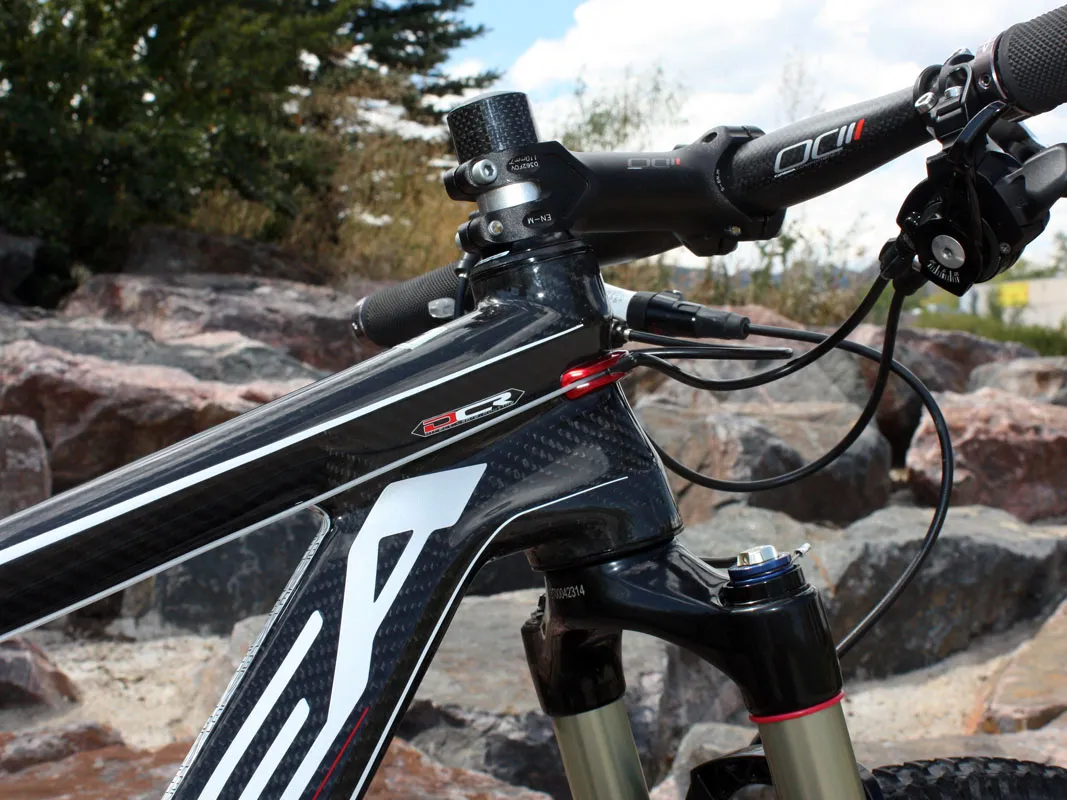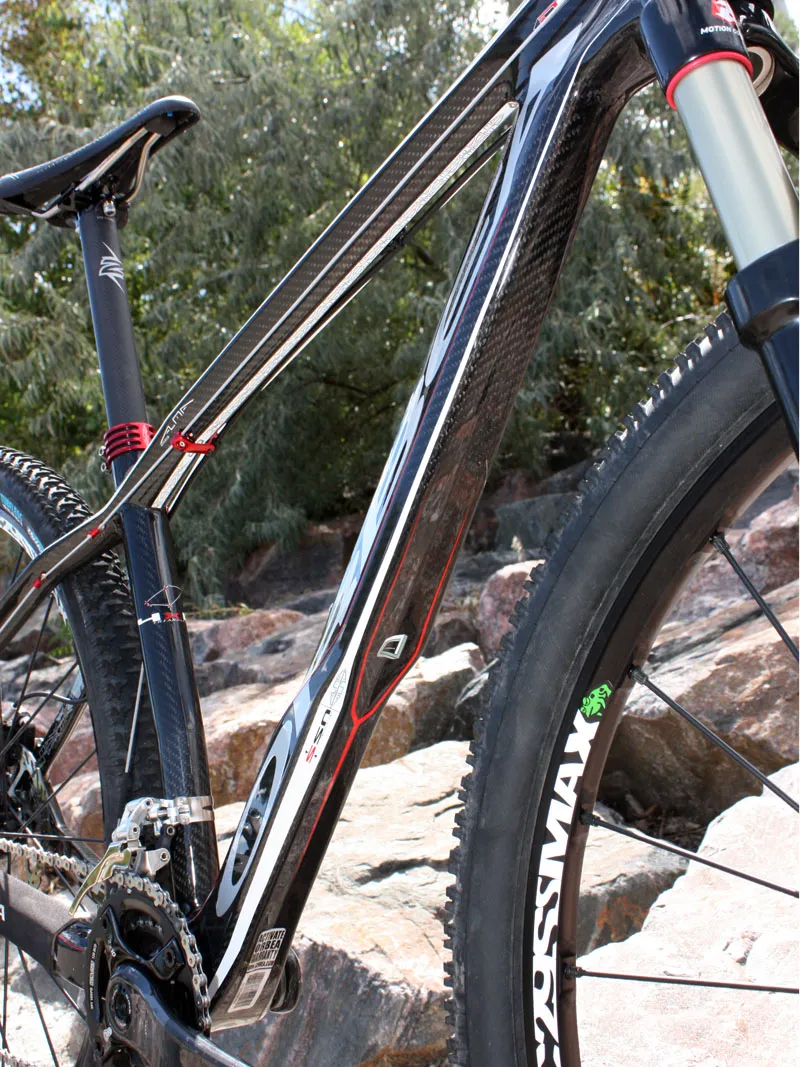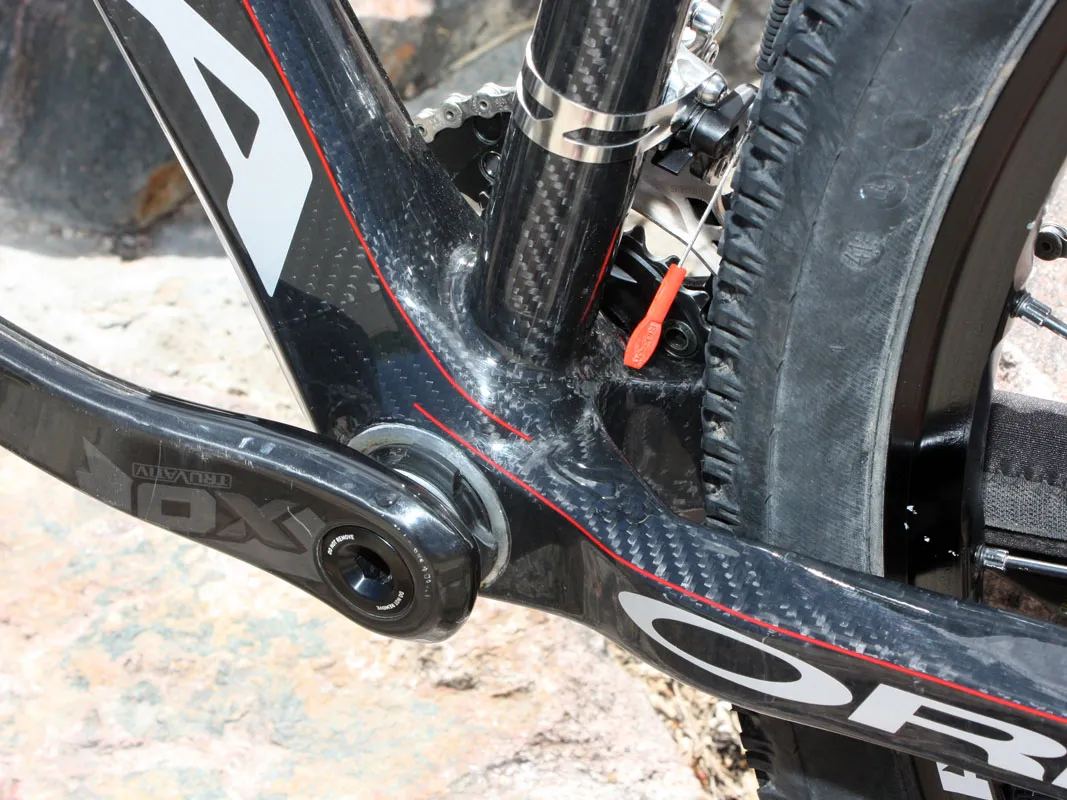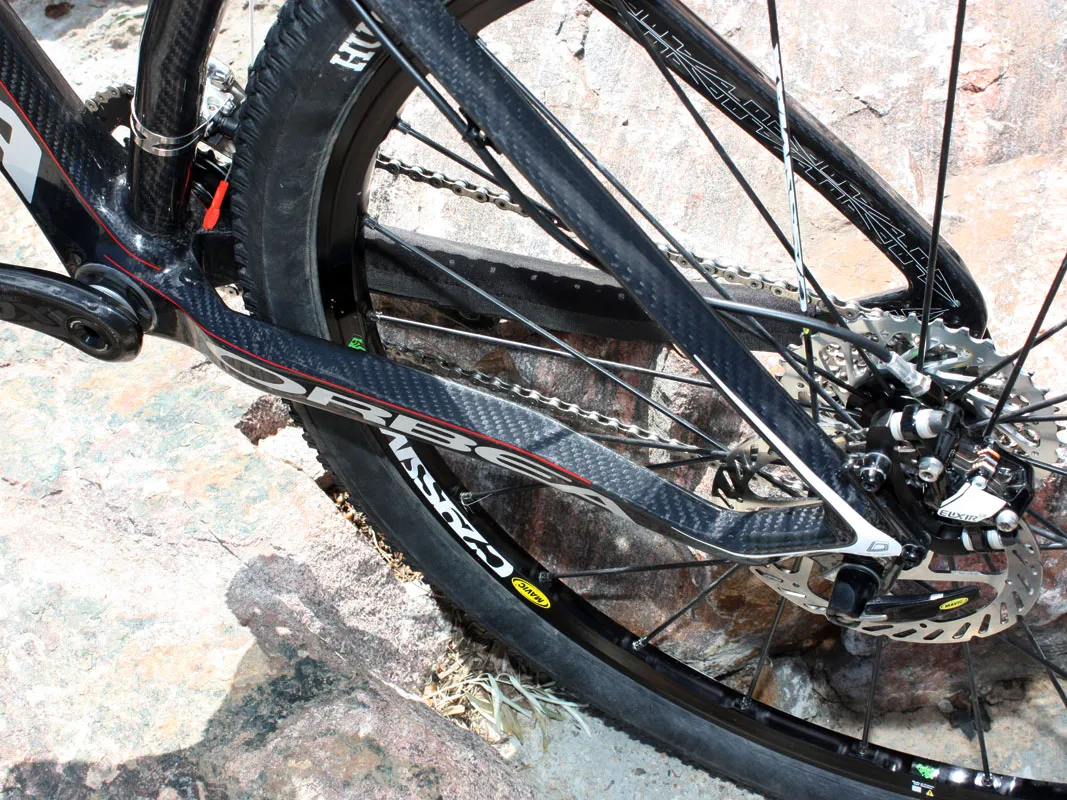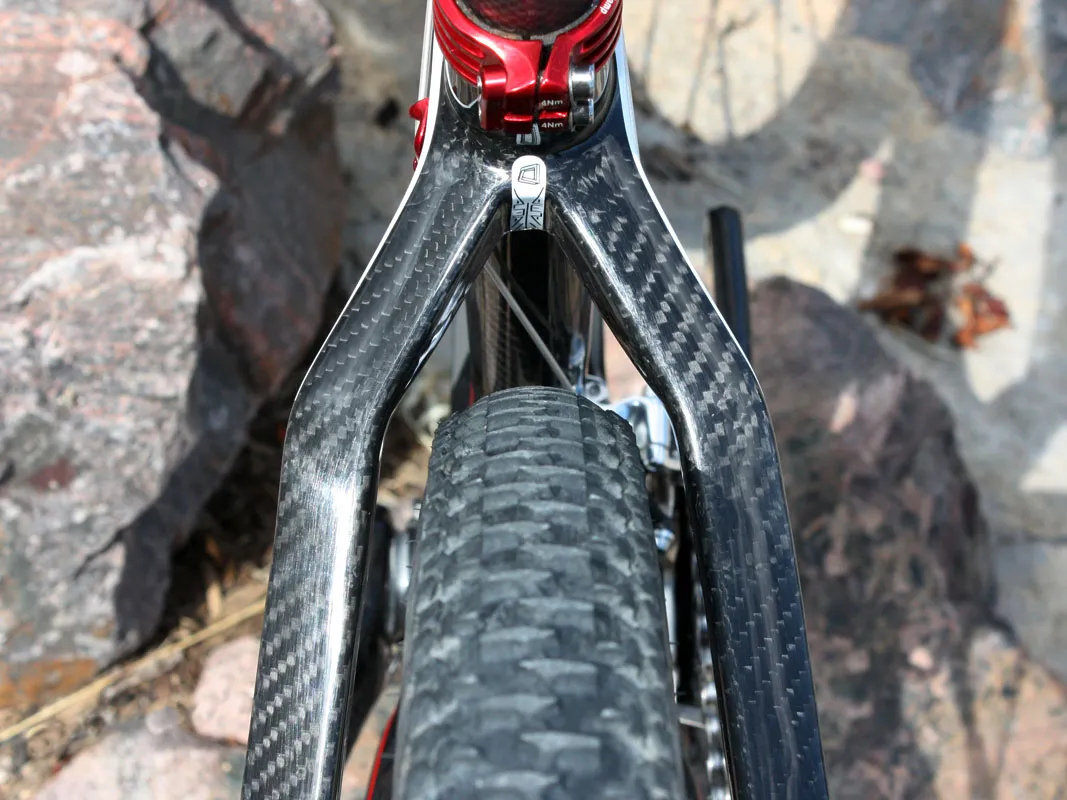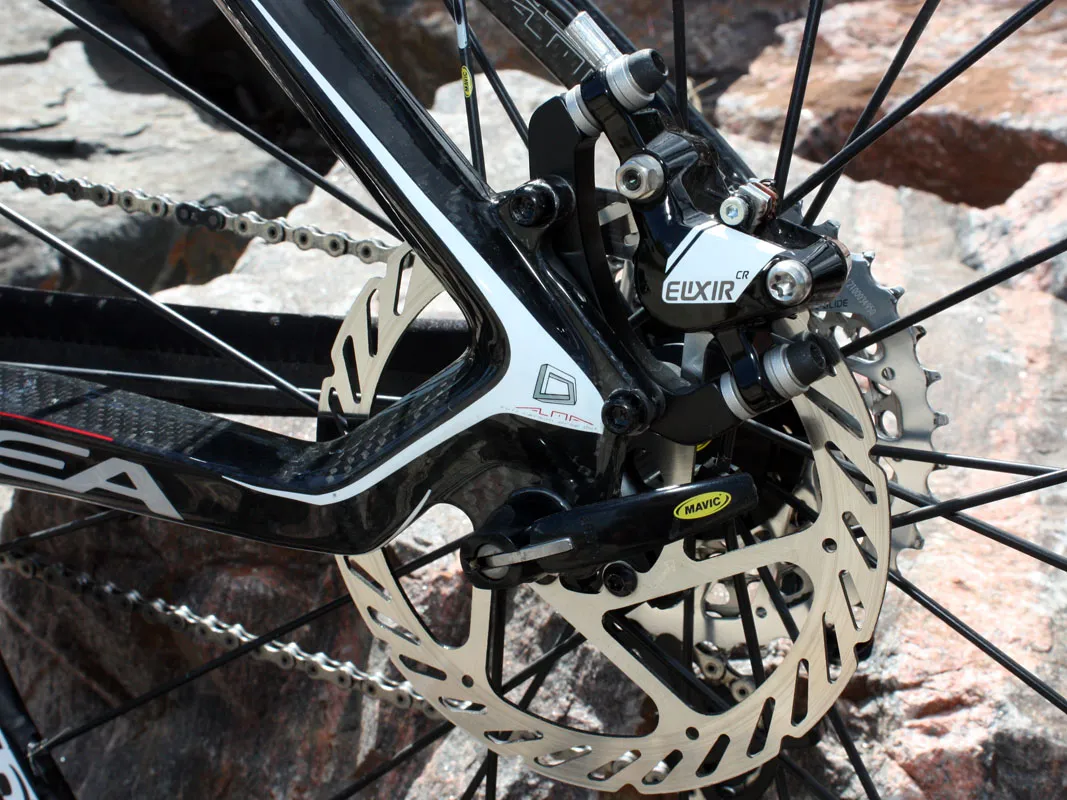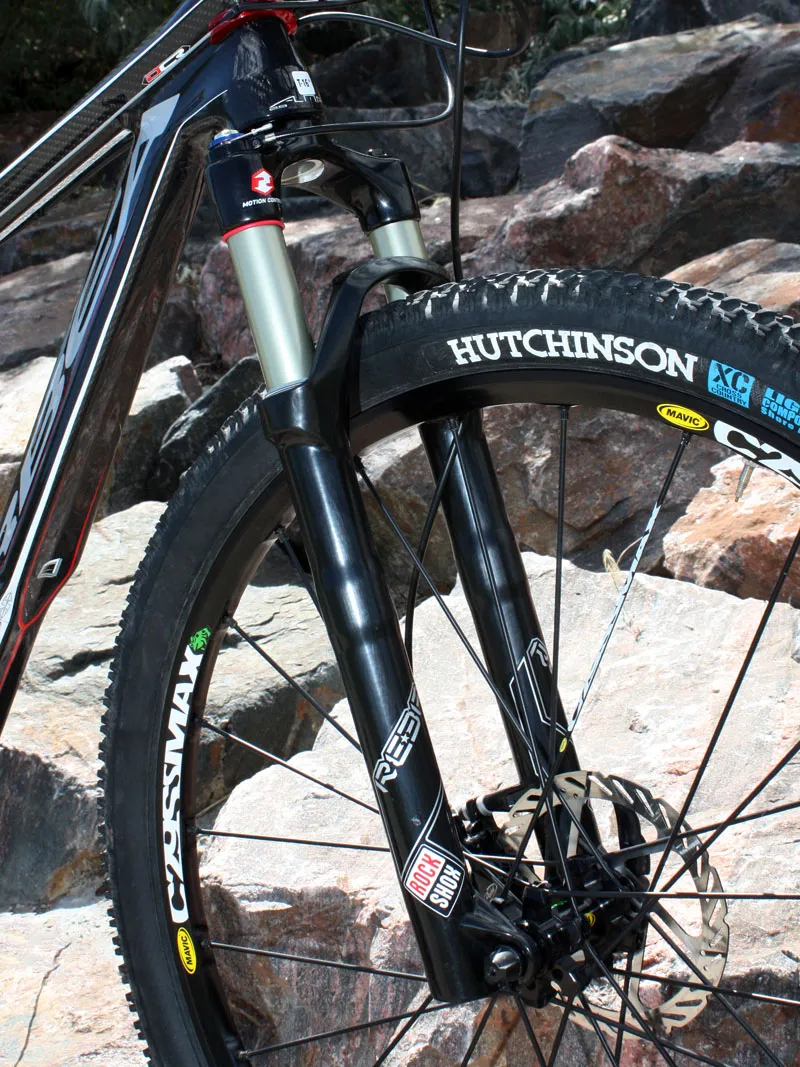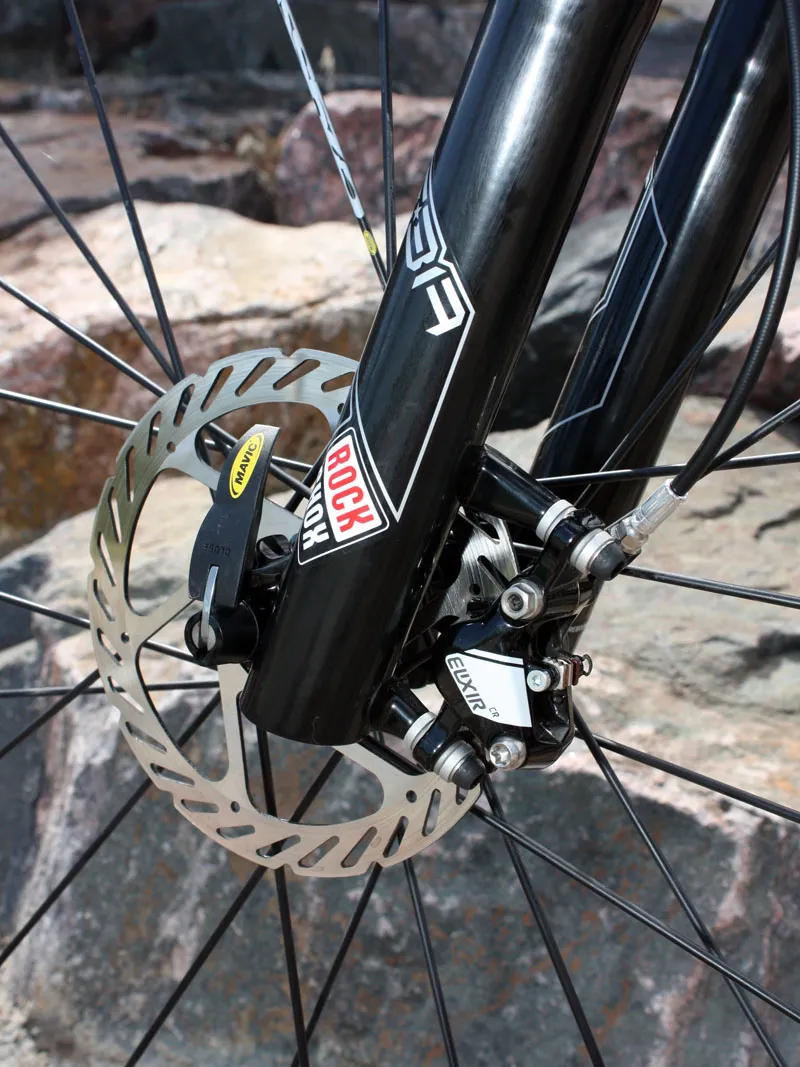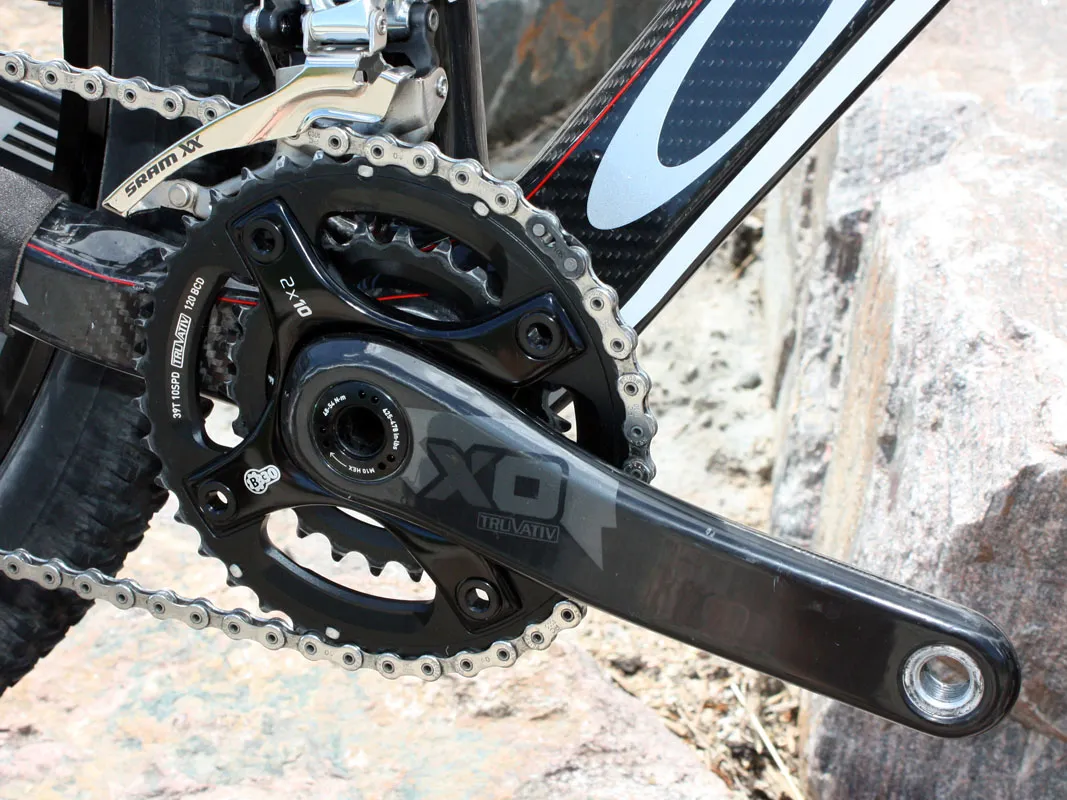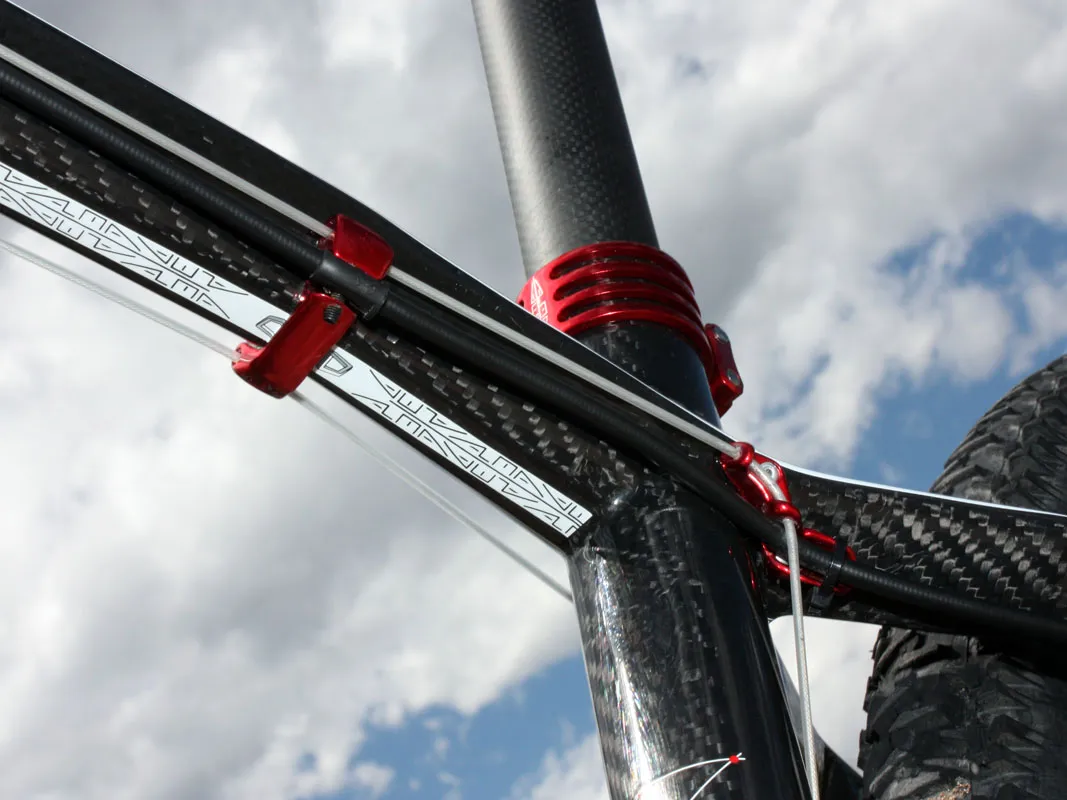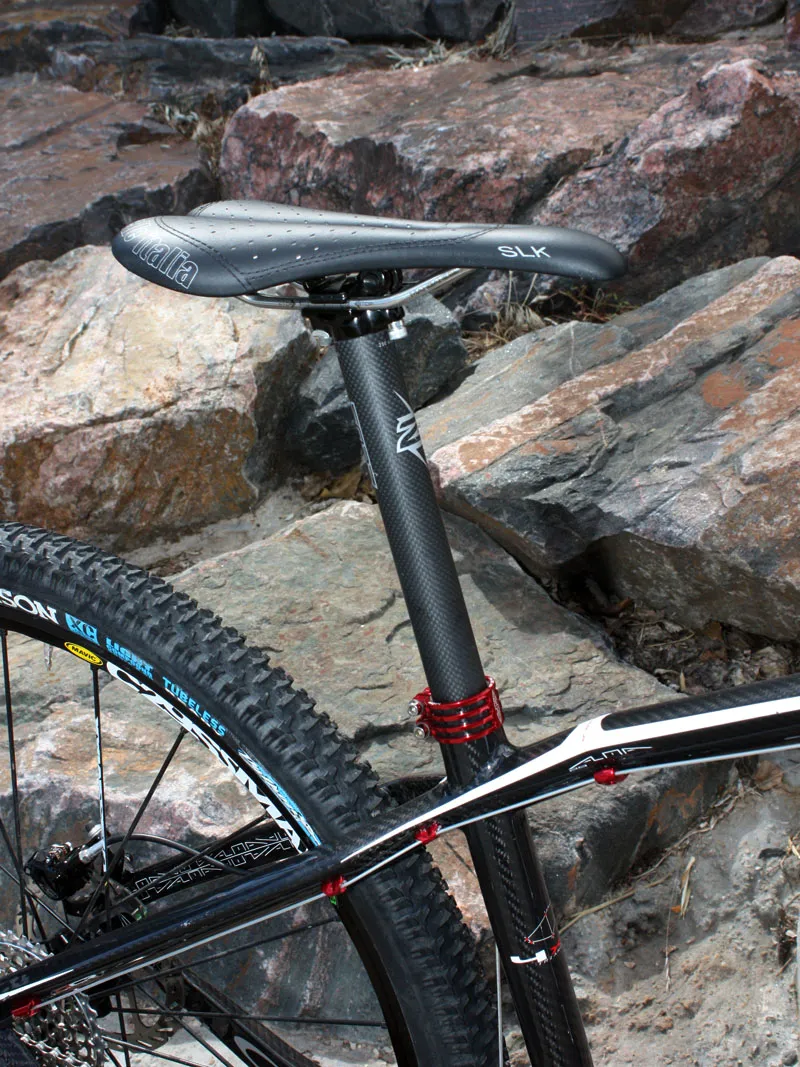Orbea were among the first major manufacturers to make the commitment to a carbon fiber 29er with their original Alma 29 back in 2006. While that version was very good in its own right, this latest iteration borrows heavily from Orbea's newer 26in Alma and the end result is altogether… different.
Frame & handling: Smooth, efficient and ultra-stable in corners, but bottom bracket is too low
What's thankfully carried over is the original Alma 29's surprisingly smooth-riding rear end and generally efficient feel. Even by hardtail standards, the new Alma 29er delivers excellent power transfer that even better full-suspension machines still can't quite match. Yet at the same time, Orbea's unique Four Point rear triangle again seems to live up to its claim of offering just a smidgeon more vertical flex by virtue of its extra chainstay kink. This is despite the fact that those stays have grown significantly this time around and there's still an oversized seatpost instead of a more compliant 27.2mm-diameter one.
Front triangle torsional stiffness is also very good and supposedly up 10-15 percent from before, though given how other competitors have advanced in recent years we're not as blown away by the Alma 29er in that respect as we once were. We're also not entirely convinced by Orbea's claim that the extra kink in the top tube by itself lends extra resistance to twist. Don't get us wrong – the Alma 29er is no noodle in this department but recklessly careening through a field of babyheads at speed definitely yields some pinball action and subsequent line corrections.
One thing we wish hadn't changed at all is the old Alma 29's geometry, which though on paper should have been semi truck-like with its more 26in-appropriate 71° head tube angle was, in fact, a delight to rip through tight singletrack and carve across fast, flowy ground. In keeping with the times, Orbea have kicked the fork travel up by 20mm to a more versatile 100mm, increased the head tube angle by half a degree to quicken things up just a hair, and trimmed about 5mm of length from the newly tapered 1-1/8 to 1-1/2in head tube to help compensate.
Thanks to the newly kinked seat tube, chainstay length has also decreased 5mm to an impressively tidy 439mm – just 16mm longer than the 26in Alma. In theory, these geometry changes should yield a chassis that's more eager to change direction while also being more capable in rough terrain, and in all fairness, this latest Alma 29 does strike us as being a tad more nimble. In addition to the other changes, Orbea also substantially dropped the newly BB30-compatible bottom bracket height, which creates an even greater 'sitting inside the bike' feel than we're already used to with 29ers.
The lower center of gravity – not the mention the unique cornering feel and 'monstertruckability' of 29in wheels – lends ridiculously surefooted cornering manners as you can practically just throw the new Alma 29er into any variety of sketchy situations and be fairly confident that you'll emerge unscathed at the other end. Say what you will about 29ers having heavier wheels and being slow to accelerate but in reality, the Alma 29er is anything but sluglike.
However, the bottom bracket now strikes us – literally, in fact – as being too low. Even when altering our riding style we still slammed the pedals and crankarm ends into rocks and other obstacles far more often than we'd have preferred, and the increased bottom bracket drop made it even harder to manual the front end when needed. Riders who tend to frequent less demanding terrain probably won't have any issues but if rocks and logs are regular features on your local trails, keep that in mind.
Moreover, the combined effect of the lower bottom bracket and longer fork travel exceeds the intent of the shorter head tube. Granted, we rode the smallest of the three available frame sizes and taller riders might not have this issue but retaining any semblance of our standard bar height was challenging to say the least, if not next to impossible.
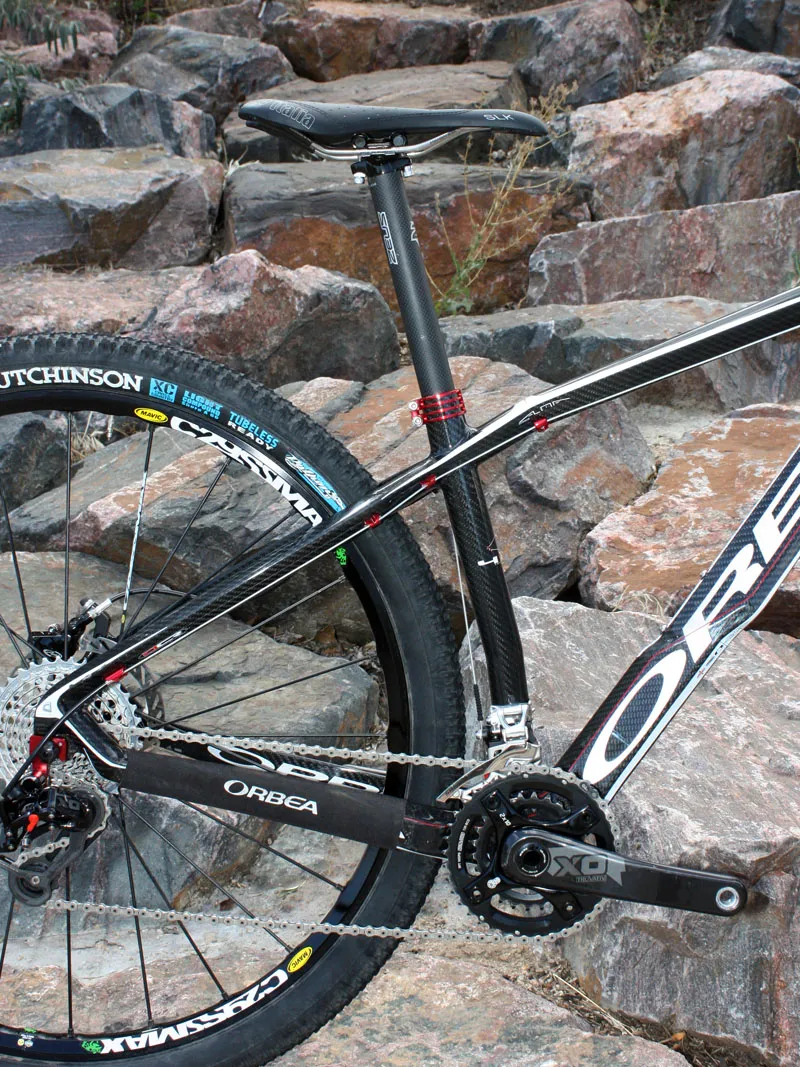
Equipment: Quality kit spec, except for the narrow bar, which will cramp your style
Orbea outfitted our test bike with SRAM's latest X0 2x10 drivetrain, yielding an as-tested weight of 10.47kg (23.08lb) without pedals – though that's not one of the configurations readily available to consumers, lest you build up an Alma 29er from a bare frame. Because of that, we'll limit our commentary on X0 to saying that it's remarkably close to the top-tier XX package in overall performance and would certainly be our high-end SRAM pick if budget is a factor. Unless you absolutely need XX's lighter weight, trick milled-out steel X-Dome cassette and narrower pedal stance width, X0 is clearly the way to go.
Part of the credit for the impressive shift performance has to go to Orbea's trick Direct Cable Routing system, though, which runs along the top tube as usual but foregoes several pieces of housing in favor of tiny alloy loops to redirect the cable directions and Gore's fully lined – and exceptionally low-friction – Ride-On cable and housing set. Rather than quietly integrate the cable routing hardware into the frame, Orbea highlight them with a red anodized finish. It's unusual looking but works extremely well.
We were similarly impressed with most – but not all – of the remaining running gear, which includes Mavic's C29ssmax tubeless wheels, a RockShox Reba RL 29 fork, Orbea's own bar, stem and seatpost, and a svelte SLK saddle from Selle Italia. The fork in particular is an able pairing for the frame, offering up capable small- and big-bump performance with the proven Motion Control damper and highly tunable Dual Air spring system.
The healthy 32mm-diameter upper tubes and pleasantly stiff C29ssmax wheels help with steering precision, too, though we'd rather have seen through-axle dropouts instead of the flexier 9mm quick-release ones specified. The stem and seatpost did their job without any fuss during our test period but one exceedingly black stain on what was otherwise a perfectly reasonable parts package was the ridiculously narrow handlebar.
In fact, it's so narrow – think 1990 standards with bar ends and lots of purple anodizing – that we could barely fit all of the included controls on the bar and we weren't able to achieve our desired brake and shifter positions, either. Orbea USA marketing man Jordan Hukee says he's working hard to swap out the uselessly short bit of carbon fiber for something more reasonable but as of right now, production bikes are still coming so equipped.
Our advice would be to not even leave the shop with one installed and swap it out immediately for something else. Depending on your trail makeup we might also suggest swapping out the stock Hutchinson Python tires. Though fast rolling and surprisingly grippy on hardpack, the small and tightly packed knobs are narrower than the casing, leaving it susceptible to sidewall damage in rocky terrain.


